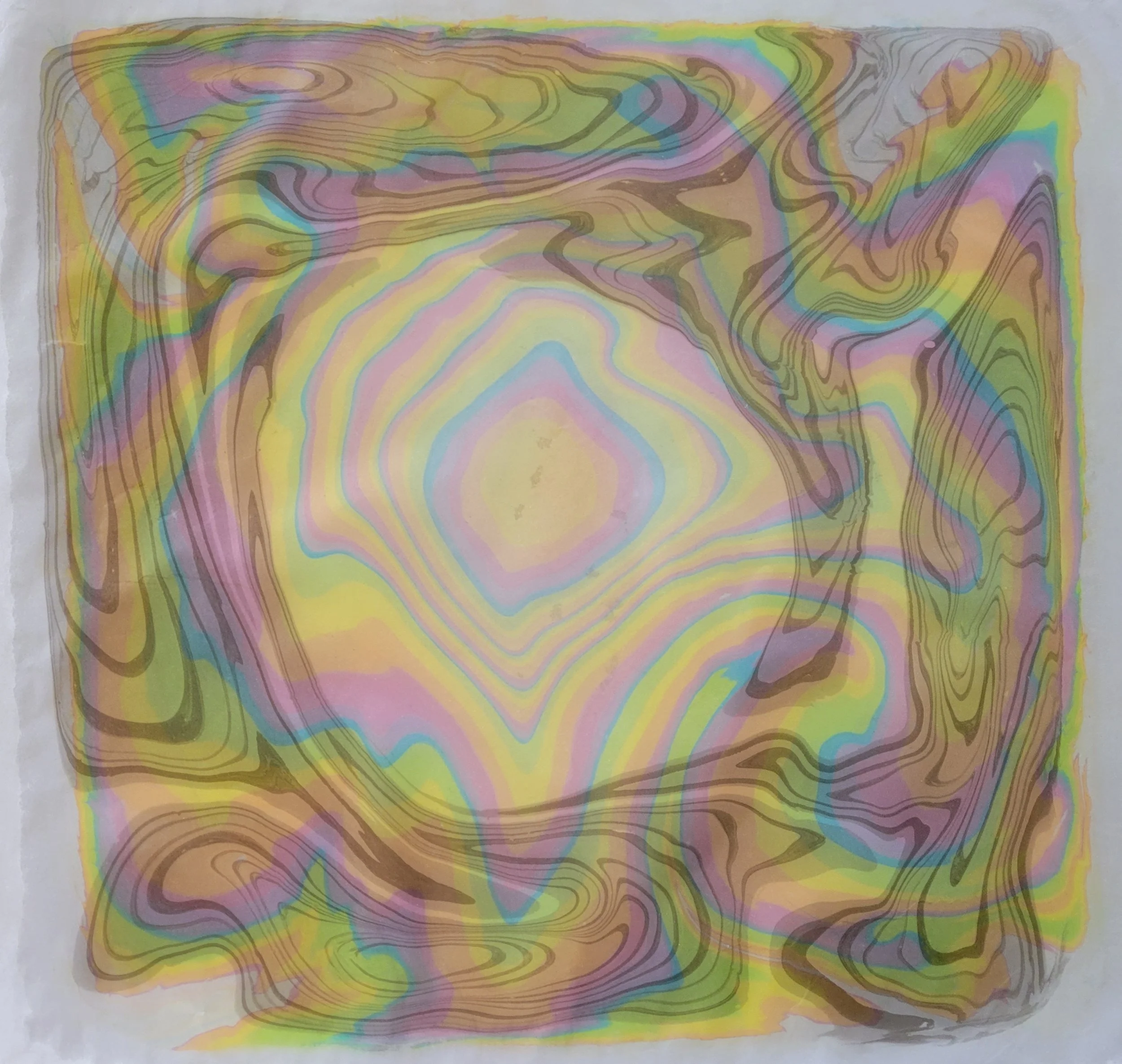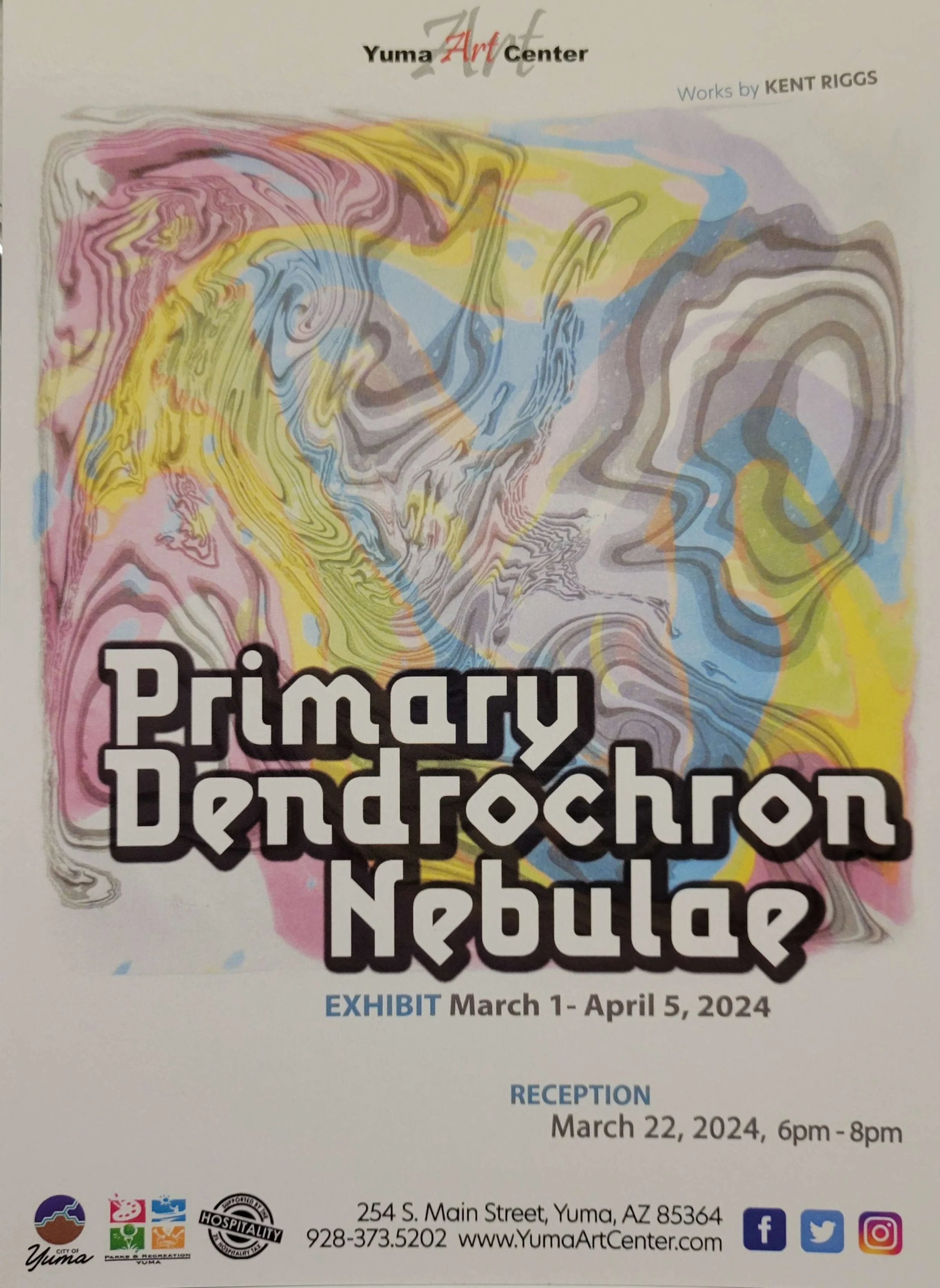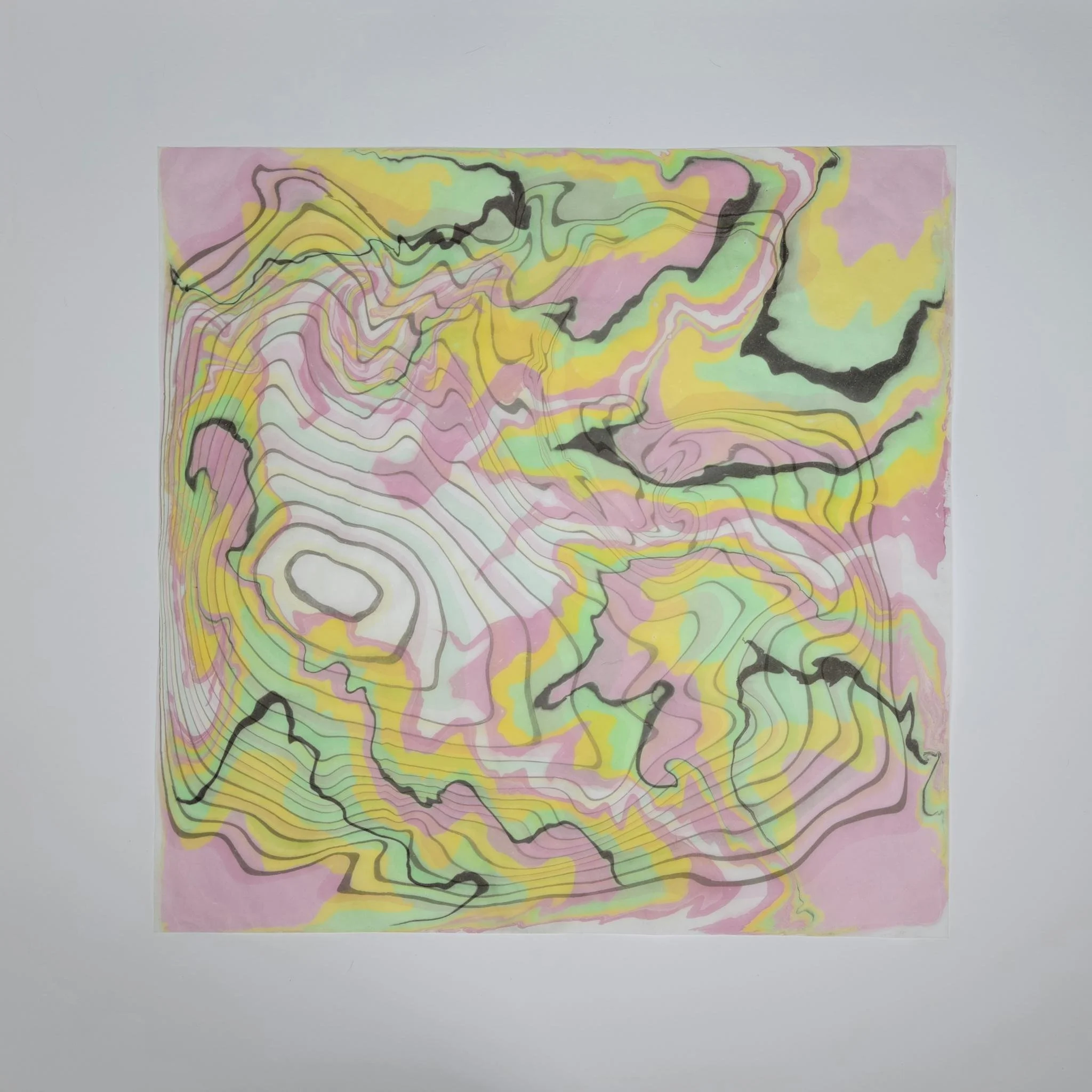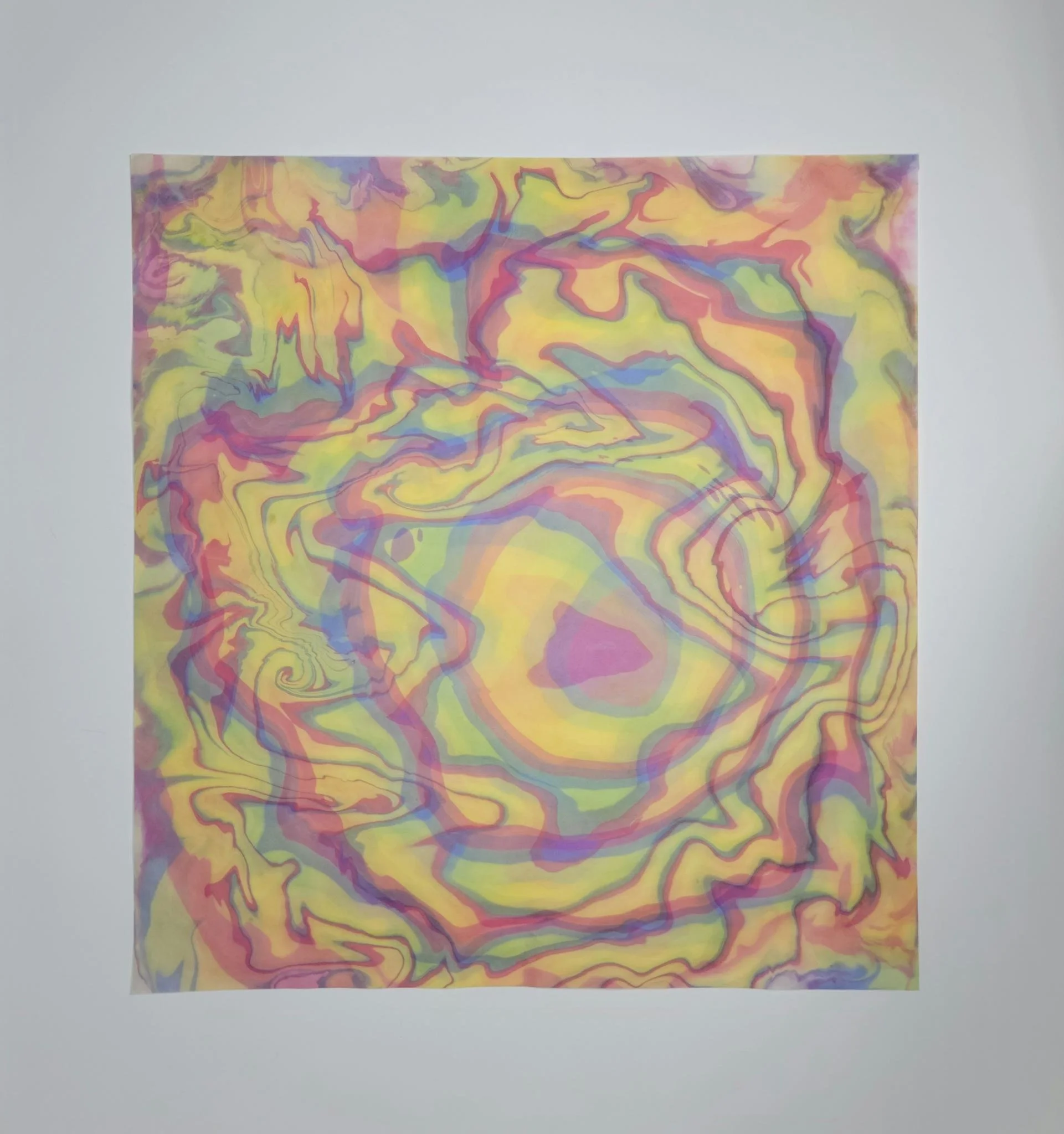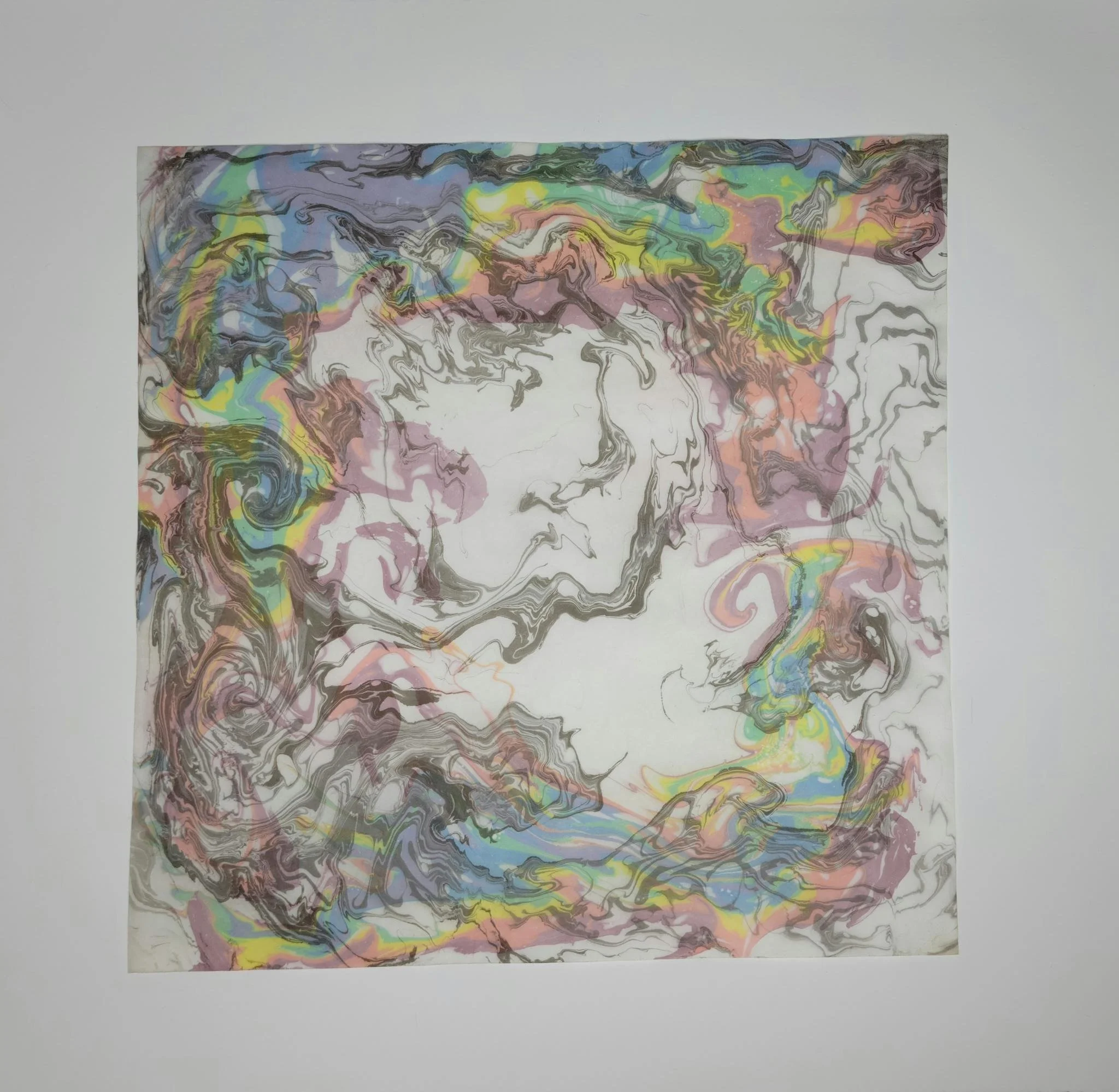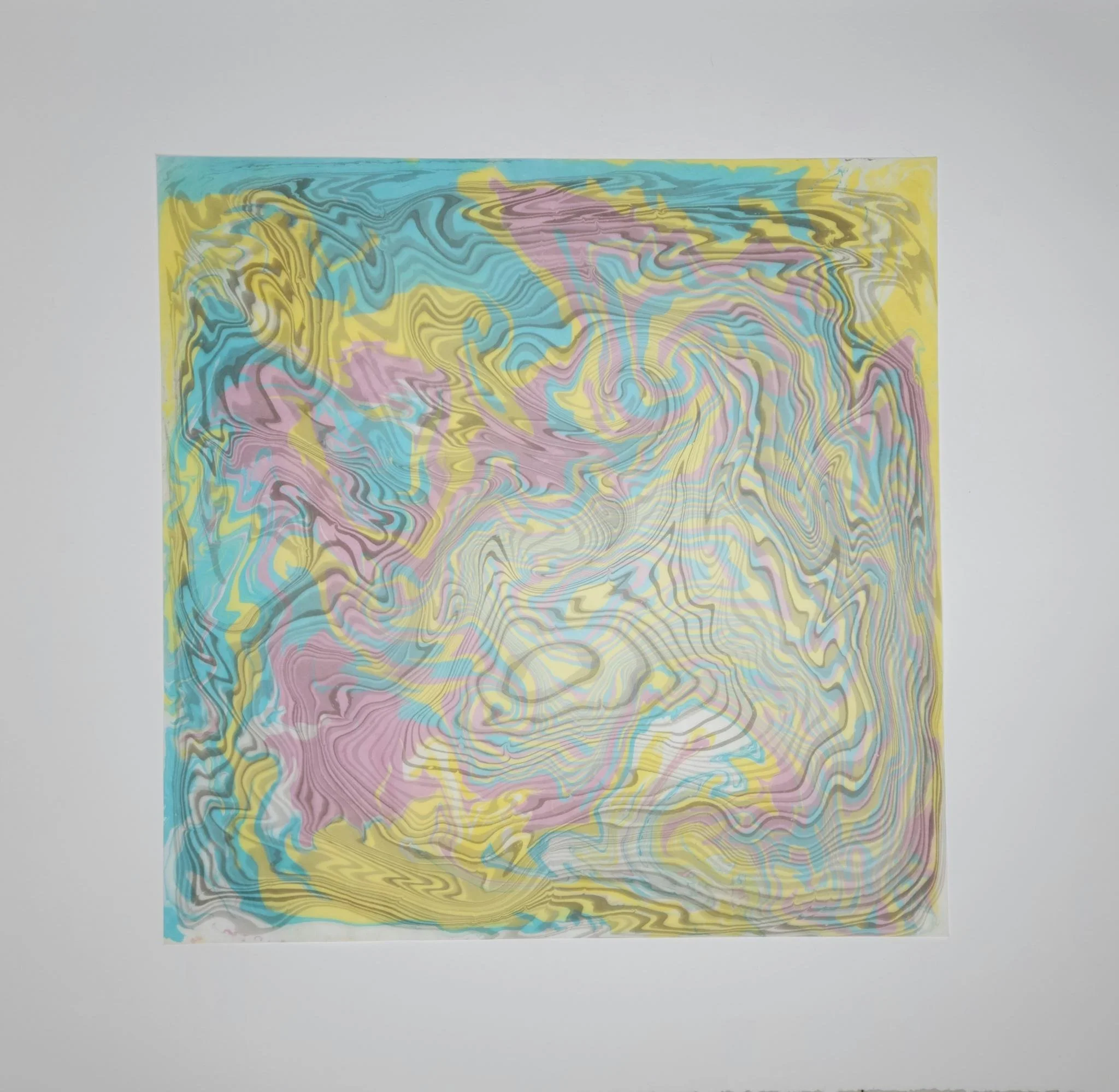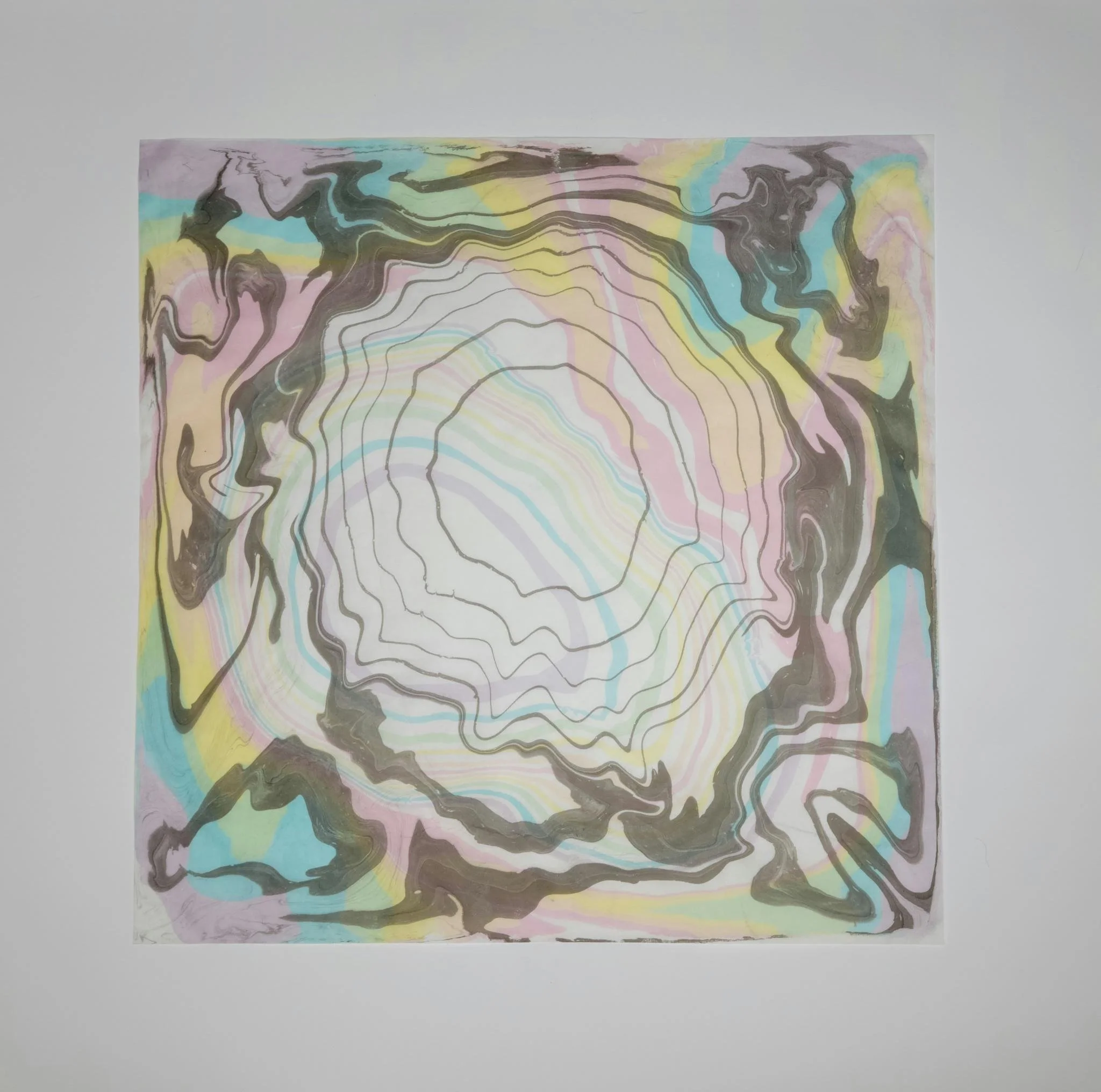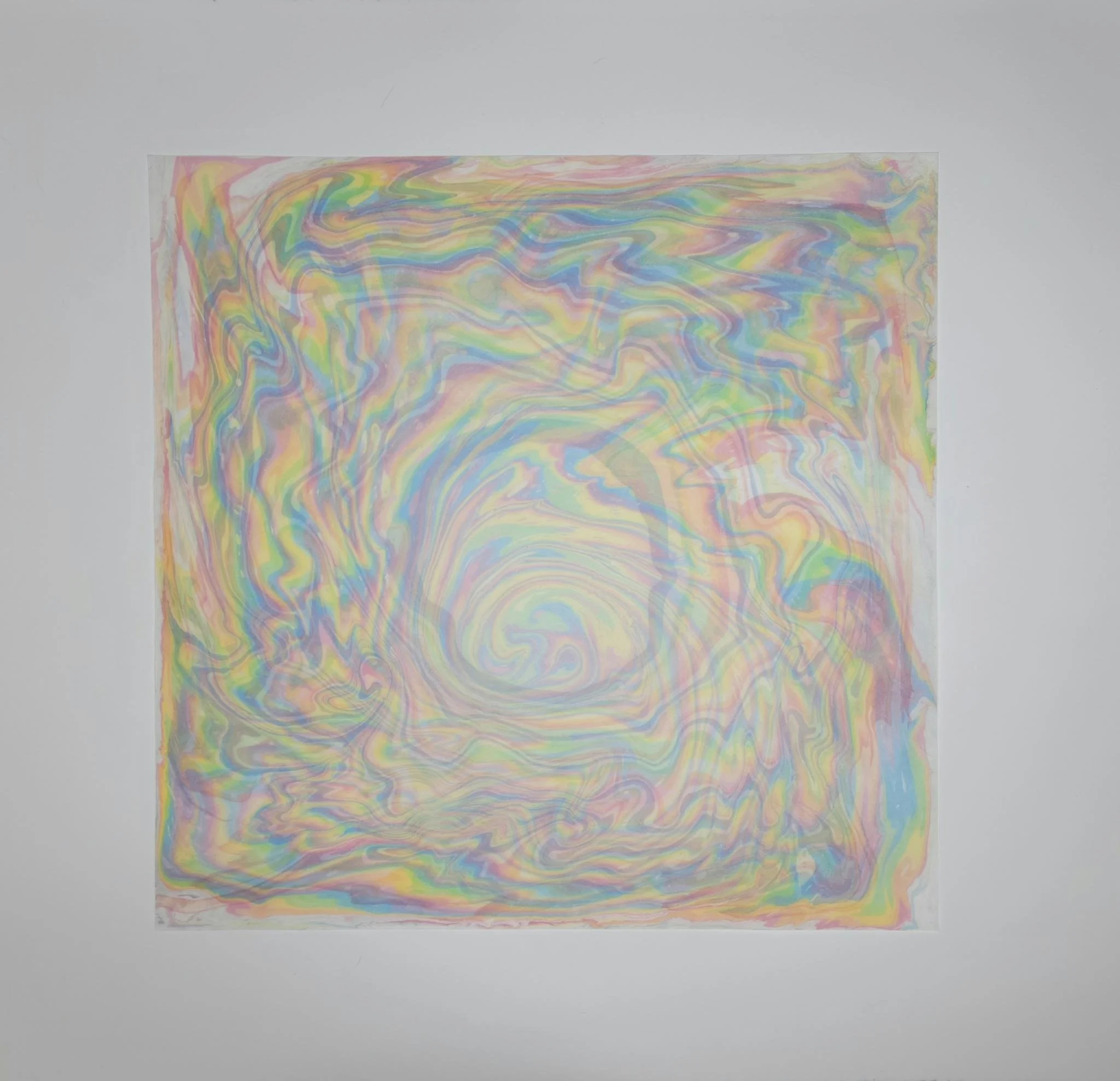Suminagashi
Two pages of waka poems by Ōshikōchi Mitsune from 10th century Japan via Wikipedia
Translated literally to “floating ink” or ink on water, suminagashi has been documented as far back as 9th century Japanese poetry though its formal origination is up for debate.
Like many Japanese arts at the time, both suminagashi and the paper making practices were guarded traditions, with knowledge of the craft and techniques often staying within families. Even today it can be difficult to find consistent backstory for its origins. Most modern makers are self taught as much of the original practice was kept secret.
Throughout history paper marbling has evolved in various ways and regions. Turkish Marbling or Ebru often comes up as brighter, more vibrant, and more controlled examples of color in liquid. Fast forward to modern times and you’ll see acrylic pouring as another evolution of the collective fascination with ripples of color.
Suminagashi stands apart in its simplicity and ease of access. Calligraphy brushes, sumi ink (traditionally derived from ground soot), a surfactant like soap berry or ox gall, a tray with water and unsized paper is all you need to make beautiful organic shapes.
My Print Elements
-

Double Prints
2 layers are often better than 1. Once the first print dries, give it another go and see what happens.
-
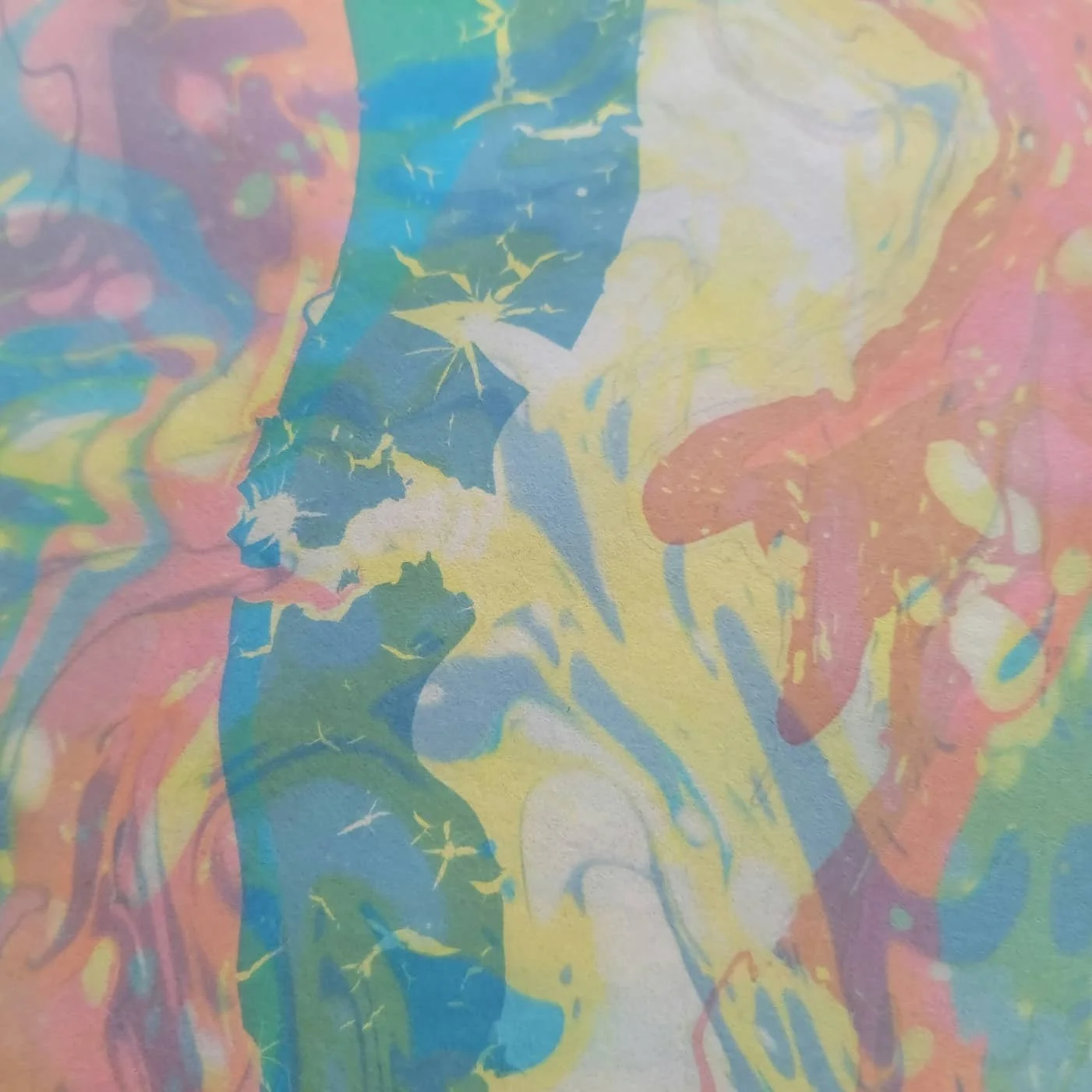
Shatter
When the ink is compressed so tightly it appears to break when surfactant is applied. Broken glass effect ensues.
-
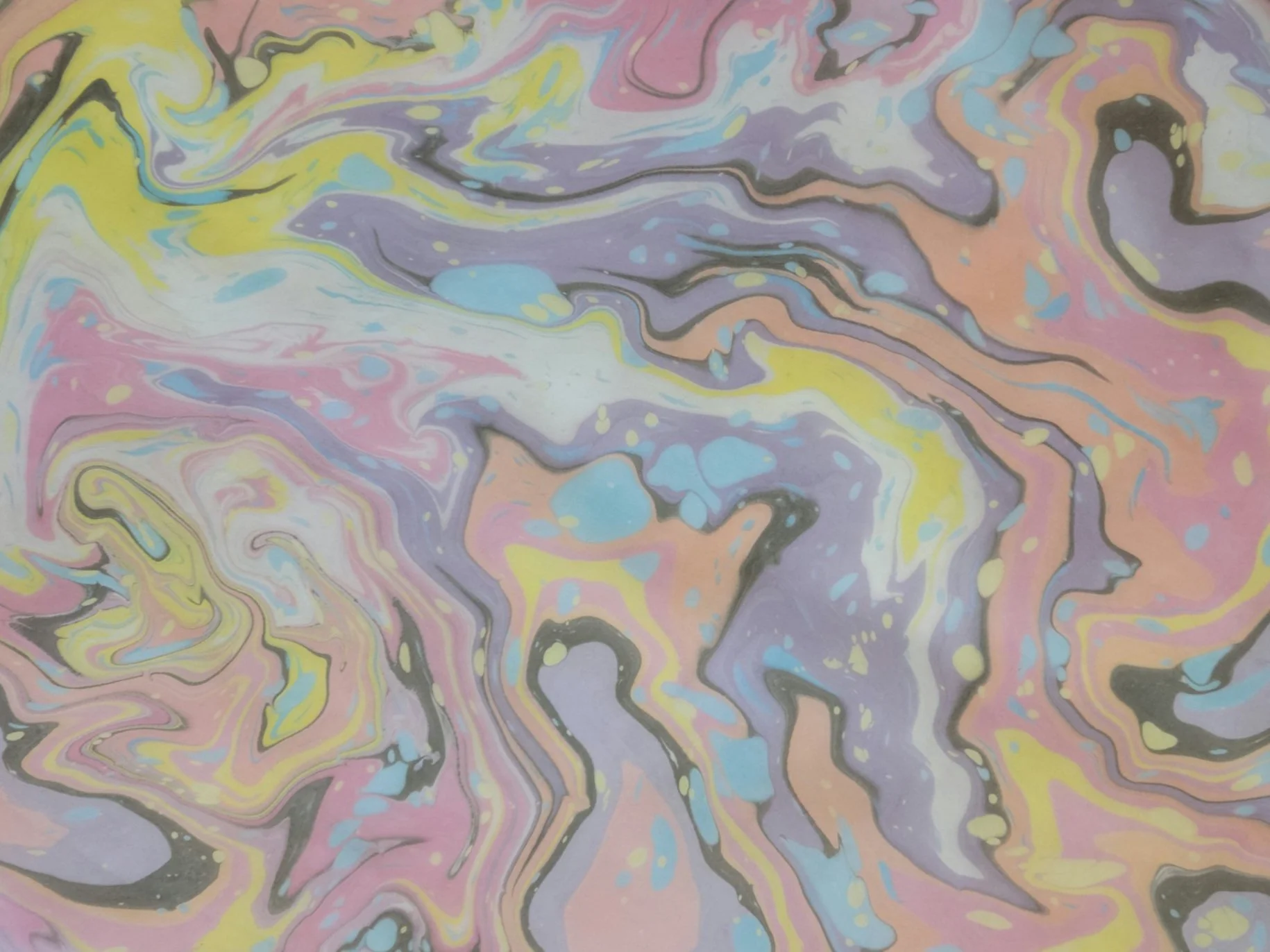
Splinks
Having a fling with color? Splinks are not quite flicking, not quite flinging, almost a splatter. A splink.
-

Swirls
The natural spiral that draws us in. Swirls are everywhere in nature but even more so in water based art.
Yuma Art Center
March 1st, 2024 - April 5th, 2024
Primary Dendrochron Nebulae
Capturing elements of duality, the vibrant works in Primary Dendrochron Nebulae juxtapose traditional black and white minimalist suminagashi with its maximal, colorful, opposite where two imprints are captured in a single piece. These prints realize moments of organic shapes using energy, repetition, and aggressive experimentation on Thai kozo paper.
Black sumi ink traditional rings frame some of the works giving concrete structure to the often wild shapes ink can take on the water. Intense opposition interjects when a second print is pulled on top of the first, breathing life into the traditionally stoic medium. Primary colors give the viewer familiar rigidity to adhere to as the organic ringlets progress known structures into fully abstract color completing the transition from ancient to ethereal.
A dance of balance and chaos can be found in every piece where each aspect of the process is a potential lever to augment the final image in an intentional way.
Take your time to examine each piece for the elements that grab your subconscious to reveal images you didn't know were there or just enjoy the playful palette. Embrace the ripples in echos, moments of minutae against concrete composition, approach with curiosity and leave with satisfying questions you didn't know you wanted to ask.




